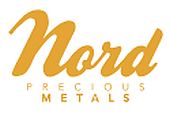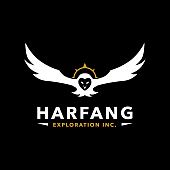 West High drills 0.85 m of 32.5 g/t Au at Midnight
West High drills 0.85 m of 32.5 g/t Au at Midnight
2023-02-01 10:25 ET – News Release
Mr. Greg Davidson reports
WEST HIGH YIELD (W.H.Y.) RESOURCES LTD. COMPLETES 2022 CORE ASSAY PROGRAM AND DISCOVERS NEW VEIN-HOSTED GOLD TO 32.5 G/T
West High Yield (WHY) Resources Ltd. has confirmed additional high-grade gold assays and has provided a status update from its 6,000-metre exploration drilling program initiated in 2022 at its Midnight gold claim located in Rossland, B.C. The Rossland gold camp historically produced over 2.76 million ounces of recovered gold and 3.52 million ounces of recovered silver.
Highlights:
- Additional high-grade gold assays, including:
- MN22-13: 262.50 to 263.35 metres depth — 32.5 grams per tonne Au over 0.85 metre;
- MN22-18: 41 to 47 metres depth — 7.99 g/t Au over six metres;
- Including MN22-18: 45.5 to 47 metres depth — 13.55 g/t Au over 1.5 metres;
- 41 holes completed and logged in 6,191-metre NQ2 diamond drilling program;
- Targets tested in historical Midnight, IXL and OK mining areas;
- 24 drill holes sampled;
- 2,865 sample assays, including quality assurance/quality control completed;
- 693 samples in 17 holes marked for 2023 spring sampling program.
“We recently received the balance of the outstanding 2022 assay data which was focused specifically on the gold content. The Company intersected more structurally-controlled mineralization in high-grade assay intervals such as those in MN22-13 northwest and MN22-18 southwest of the central Midnight mineralization along the broad northeast trend of listwanite replacement and the high-grade Baker Vein. Assays using gravimetric protocols verified significant grades up to 32.5 g/t gold (“Au”) in intervals from 85 cm and composite intervals to 6 metres,” stated Greg Davison, P.Geo and the Company’s internal qualified person (the “Qualified Person” or “QP”) for Midnight. “We look forward to completing the assay sampling of seventeen (17) remaining holes in the 2023 Midnight drilling program,” Mr. Davison further noted.
The 2022 Drilling Program was completed and closed for the winter season on November 15, 2022 at Midnight. A total of 6,191 metres were completed during the course of the 2022 Drilling Program.
Assays received from 2,856 core and QA/QC samples are reported for twenty-three (23) completed holes and one partially sampled hole. Seventeen holes, currently with 693 samples and QAQC insertions, await core cutting and sampling in the spring 2023 program. Geological compilation and Leapfrog modelling of the current and historical drill and geological results is ongoing. Final LiDAR bare-earth maps are pending receipt in February 2023.Figure 1. Location map of 2022 and post-2000 historical drilling on Midnight, IXL and OK mining claims and grants with mine portals and access trails. Current drilling completed at OK South and Upper Portal, IXL Upper and Lower Adit, and Midnight 3100 and 3200 Portals SSW of the Italian Tunnel.
 |
2022 Exploration Summary
The 2022 Drilling Program was focused on identifying extensions to zones of known Midnight mineralization, areas with potential within and peripheral to the OK and IXL historical mines, and deep targets below the known footprint of mineralization. A total of 31 collar locations are fully permitted for the current program.
The drilling under the 2022 Drilling Program initially collared around the Midnight mine workings on targets from surface to 200 metres depth located to the southeast, east and north of the historical high-grade Baker Vein. These geological targets occurred within and peripheral to the Listwanite (quartz-carbonate-serpentine) zone which straddles the east-northeast trending fault contact between the OK ultramafic intrusion and the Jurassic-age andesite-dominant sequence to the north.
West High Yield brought in a second and third drill to expand the area of immediate interest outside the Midnight-Baker targets and to explore additional and deeper targets from 200 metres to more than 600 metres transecting the andesite-ultramafic contact and below the Baker Vein from the Midnight and neighbouring IXL claims.
The additional drills also targeted high-grade polymetallic Au-Ag-Cu-Pb, massive to stockwork-style silicified andesite-hosted mineralization with pyrrhotite and pyrite reported and observed from the OK Mine area historical drilling and is located between the OK Portal and the Upper Raise on the OK claim 50m east of the Cascade Highway.
The high-grade gold intersections occurred mainly within variably deformed and serpentinized peridotite showing moderate to pervasive quartz-serpentine-carbonate replacement transected by discrete quartz-dominant veins to 50cm and sets of <1-10 mm veinlets with minor to sparse sulphides. The gold occurred within and peripheral to the multi-stage veins and irregular stockwork-style, locally with breccia textures. Massive, finer-grained, weakly altered black peridotite, with 5% to 10% disseminated to microfracture-controlled pyrite and/or pyrrhotite, intersected discrete core intervals of 10-60 metres, consistently west of the Midnight and in the IXL, generally reported lower Au grades (0.2-2.0 g/t Au). These intervals were distinct from the coarser-grained peridotite containing trace sulphides, commonly pyrrhotite, and gold values at or near detection limits (<0.005-0.01 g/t Au).
Coarse-grained pyrrhotite and polymetallic base metal sulphides (Pb, Cu, Mo), typically in vein arrays and breccias, was reported from the hanging wall andesite and basalt flows though gold showed limited values outside the contact zone with the north-easterly alteration trend.
Leapfrog compilation with 2D and 3D mapping, of current and historical drilling and underground workings, and recently-received high-resolution LiDAR orthophoto and bare-earth topographic control, will be used to evaluate structural features and geospatial significance of broad alteration, sulphidation and lithological controls in the mineralizing system.
Geochemical Analysis, Quality Assurance and Quality Control
All core handling was conducted at the secure logging facility on Midnight. All samples were bagged and sealed with numbered security tags under the supervision of the QP and delivered to Overland Transport in Rossland for delivery to ALS Global (“ALS”) in North Vancouver, British Columbia for gold and multi-element analysis. ALS is a facility certified as ISO 9001:2008 and accredited to ISO/IEC 17025:2005 from the Standards Council of Canada. Metal values disclosed herein are reported principally from sawn (1/2) drill core samples over intervals of 30cm to 1.6 metres. Certain friable and broken intervals were processed using a rotary wedge core splitter. The remaining half-core samples are cross stacked on site. Local chain of custody was monitored and maintained directly by the QP and Project Geologist under the direction of the QP.
The samples were crushed to 70% passing 2mm (PREP-31) and a split of up to 250 grams pulverized to 85% passing 75 micrometres (-200 mesh). Pulps (50gram split) were submitted for Au analysis by Fire Assay with Atomic Absorption finish (Au-AA23). The retained pulps also were analyzed by Four Acid Digestion followed by Inductively Coupled Plasma Atomic Emission Spectrometry (ICP-AES) multi-element analyses (ME-ICP61). Over-limit Au and Ag samples were analyzed by Fire Assay with Gravimetric Finish Ore Grade (Au-GRA21 or Au-GRA22, Ag-GRA21). Screen metallics assays were conducted on select one-half core samples to quantify gold distribution in the screen oversize (SCR-24B) and duplicate 50-gram pulps of the screen undersize (Au-GRA22). One 30cm sample of broken core with visible gold was sampled in its entirety through the SCR-24B protocol.
In-house quality control samples (blanks, standards, preparation duplicates) were inserted into the sample set using a protocol designed by the QP. ALS Global conducted its own internal QA/QC program of blanks, standards and duplicates, and the results are provided with the Company sample certificates. The results of the internal and ALS control samples were reviewed by the Company’s QP and evaluated for acceptable tolerances prior to disclosure. All sample and pulp rejects are stored at ALS Global pending full review of the analytical data, and future selection of pulps for independent third-party check analyses, as requisite.
The Company’s Qualified Person believes that the sampling documentation, analytical protocols and quantitative data will withstand scrutiny for inclusion.
Qualified Person
Greg Davison, MSc, PGeo, Senior Consulting Geologist to West High Yield, is the Company’s Qualified Person for Midnight and is responsible for approval of the technical content of this press release within the meaning of National Instrument 43-101 – Standards of Disclosure for Mineral Projects, under TSX Venture Exchange guidelines.
About West High Yield
West High Yield is a publicly traded junior mining exploration and development company focused on the acquisition, exploration, and development of mineral resource properties in Canada with a primary objective to develop its Record Ridge magnesium, silica, and nickel deposit using green processing techniques to minimize waste and CO2 emissions.
The Company’s Record Ridge magnesium deposit located 10 kilometers southwest of Rossland, British Columbia has approximately 10.6 million tonnes of contained magnesium based on an independently produced preliminary economic assessment technical report prepared by SRK Consulting (Canada) Inc. in accordance with National Instrument 43-101 – Standards of Disclosure for Mineral Projects.
We seek Safe Harbor.
http://www.whyresources.com/news/





















